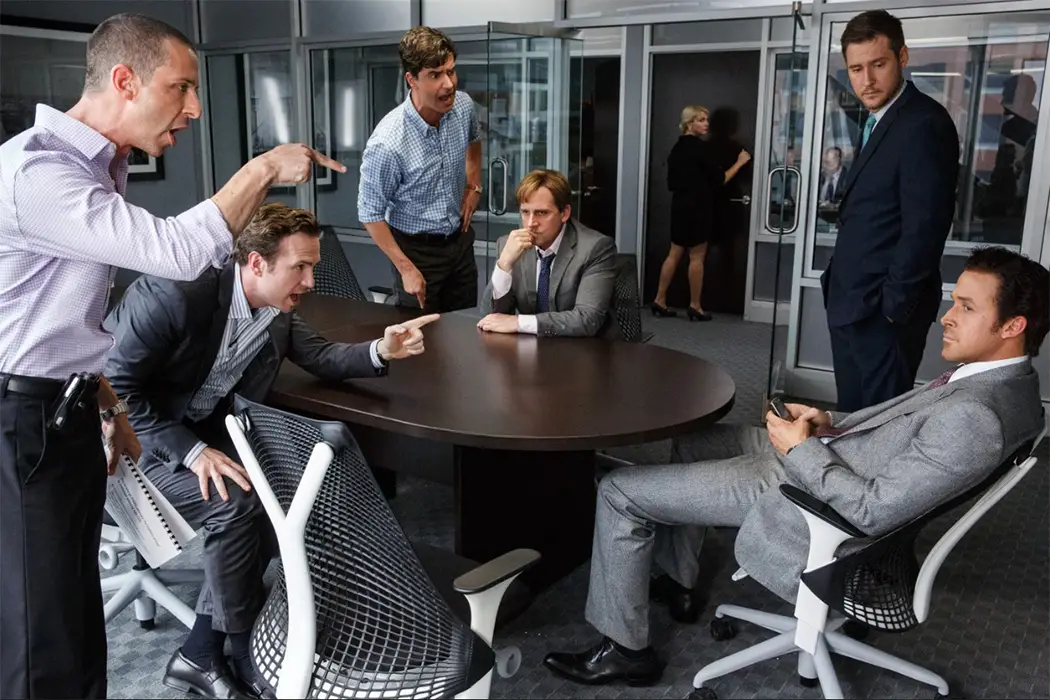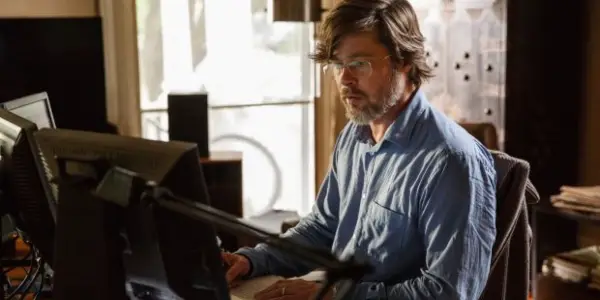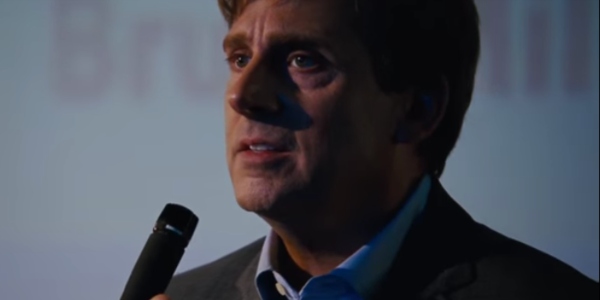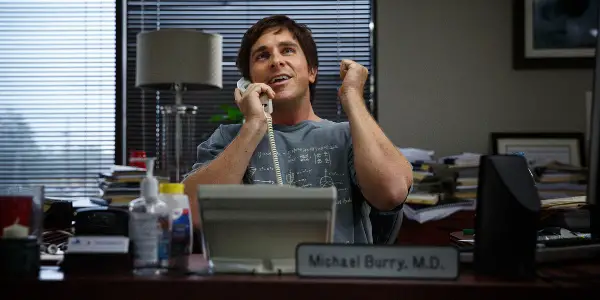An Enigma Of Film Editing Of THE BIG SHORT

Currently working on his Bachelor's in Media Arts with a…
Film editing is an art form that’s usually at its economical best when invisible and intentionally unflashy. And because of that, it goes much too often overlooked and unthought about as it goes along its day as the humble caretaker of continuity and curator of cohesion in film; a thankless job to say the least, as without it, any attempt at even a mediocre final product falls, ever so sadly, away.
But then there’s The Big Short.
When the editing of any other film might slip off in the background, content to service the bare bones basics of keeping the story well-paced and well-understood, Hank Corwin, the Academy Award-nominated editor of the film in question, seemed to have other ideas.
Breaking the Rules
Though it’s fun to say the rules of film editing and how to make a film in general are ‘made to be broken’ and find a nice bit of pride in your saying so, they are all still very well there for a reason. Random freeze frames or doing jump cuts just for the sake of it in pursuit of being original will, more often than not, result in a pretentious mess. So why does The Big Short get a free pass, huh? Just because it’s a big Hollywood movie, and the experimental short I did my sophomore year of college isn’t?

First of all, relax. That’s not what I’m saying. Second, none of this can be done just for the joy of doing it. It must serve a dramatic purpose. It’s not enough to break the rules; you have to have a good enough reason to do so that not only doesn’t distract from the storytelling or the characters, but enhances them.
The Big Short’s Reason
The Big Short’s seemingly frantic, random choices to cut at every perfectly unconventional or awkward moments frequently result in such idiosyncrasies as lines of dialogue being cut short (some while a character is in the middle of a word, even) and scenes ending at unnatural beats way before you want them to. And what better way to capture the crazy, panicked, anxiety-driven atmosphere of the 2008 Housing Crisis?
If you were old enough to live around late 2007 to 2008 as a financial independent and were affected by it personally, you might watch this movie and feel yourself hearken back to the same endless anxiety and pressure you felt for months on end and not be sure why.

All sense of relaxation and comfort with what you’re used to when going to the movie theater and watching the latest film from the guy who made Step Brothers is now whisked away to the land of some weird, unnerving feeling.
But since the characters in the movie aren’t part of the population directly affected by the full force of the economic meltdown, writer/director Adam McKay, Hank Corwin and company had to figure some other way to immerse an audience in comfortable hindsight back to what it was like for a majority of Americans then.
That’s where the job of the film editor came in, and thus a powerful undercurrent of worries such as “Am I going to have a job tomorrow?” or “Are my kids going to have money to go to college?” is made, even if none of the characters in this film would ever have to be in that position themselves.
The Baz Luhrmann Great Gatsby of Financial Biopics
While music isn’t technically part of film editing, The Big Short is a particular case that can’t be ignored. Not since Baz Luhrmann’s The Great Gatsby has a movie – at least, on the surface – compiled a soundtrack this wildly out of place. And I mean this in the best way possible.
Where The Great Gatsby finds its footing in blending its period setting of the Roaring Twenties with the same frat house verve of today, The Big Short succeeds in combining the corporate, Wall Street economics vocab-a-thon with gangster rap, hard rock, and a single piece of musical theatre.

Though, unlike The Great Gatsby’s strategy of wrangling a younger, modern day audience to a period-set movie of an old book, all the music in The Big Short are deep-buried relics of the early 2000s. The kind of music that would get your aux privileges irrevocably stripped and pushed out of the moving car if you played them today. These aren’t in any way songs to get any demographic to buy seats – it’s music for a period piece.
Though The Big Short’s period setting isn’t the Roaring Twenties or Nixon-era America, it’s Britney Spears and Eminem in their primes. It’s Feel Good Inc. and Drop It Like It’s Hot in all the cultural zeitgeist it can muster up, bringing us a time in American history that a large portion of us were alive and well to see, but can look back on in hindsight nevertheless.
And that, I think, is what sets this apart from a certain CGI-fueled F. Scott Fitzgerald adaptation more than anything.
The Big Conclusion
Anything else I can say at this point is redundant so long as you remain in a state of having not seen or re-seen, experienced or re-experienced first hand what film editing can do at its most imaginative and insane, courtesy of half the mind behind Step Brothers, The Other Guys, and Anchorman: The Legend of Ron Burgundy.
What do you think? Does The Big Short deserve the praise for the editing choices it makes? Did it deserve the Academy Award for Best Film Editing? Let us know what you think in the comments!
Does content like this matter to you?
Become a Member and support film journalism. Unlock access to all of Film Inquiry`s great articles. Join a community of like-minded readers who are passionate about cinema - get access to our private members Network, give back to independent filmmakers, and more.
Currently working on his Bachelor's in Media Arts with a Minor in English, William's movie taste consists of a sad overindulgence in anything Charlie Kaufman, Pre-2011 Pixar, or the works of The Holy David Trinity (Lynch, Lean, & Fincher). He also would like to add that any queries you may have regarding the latest in roller coasters, why 3d Blu-ray gets a bad rap, or the importance of music in movies and musical theatre should be directed to him.













